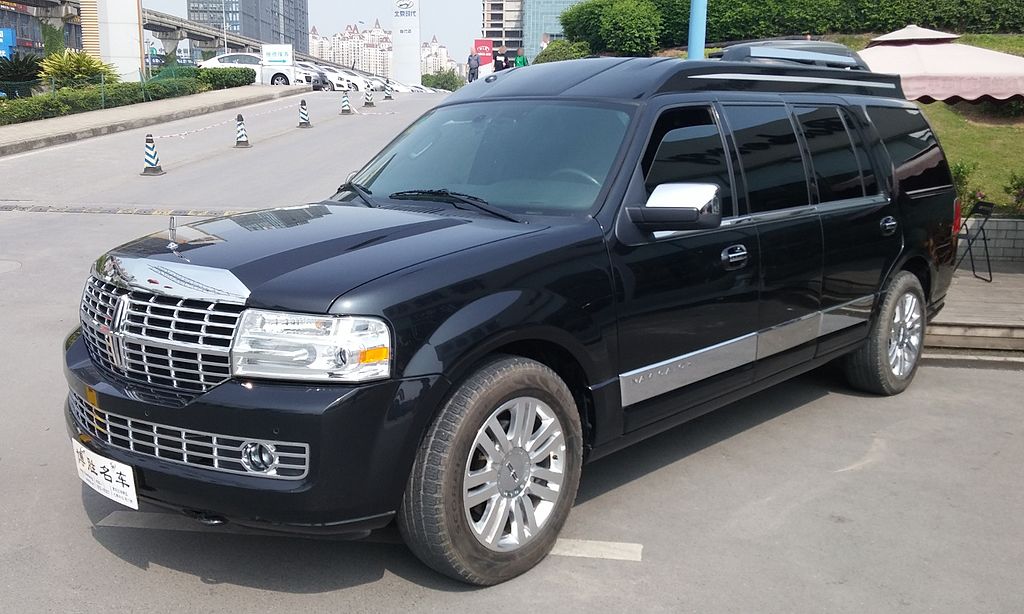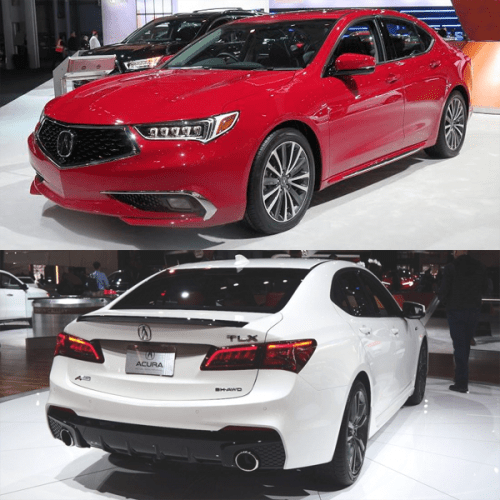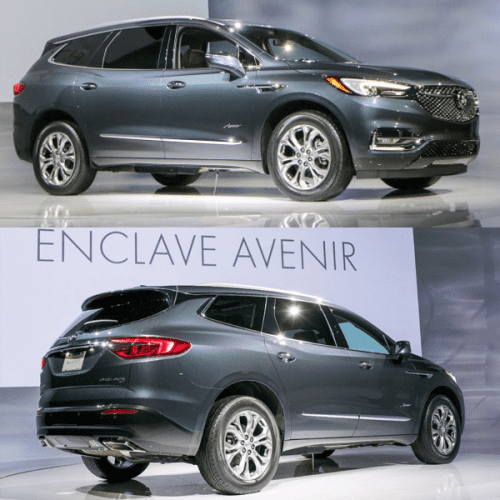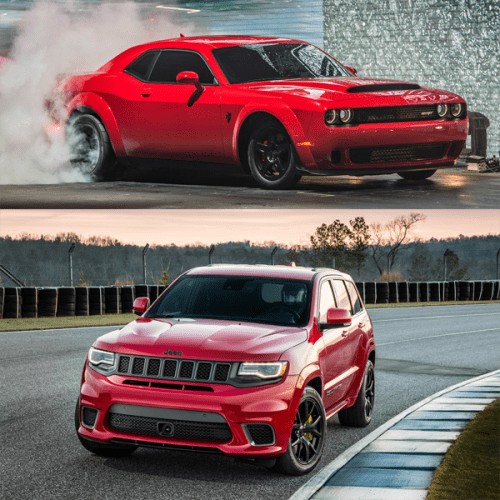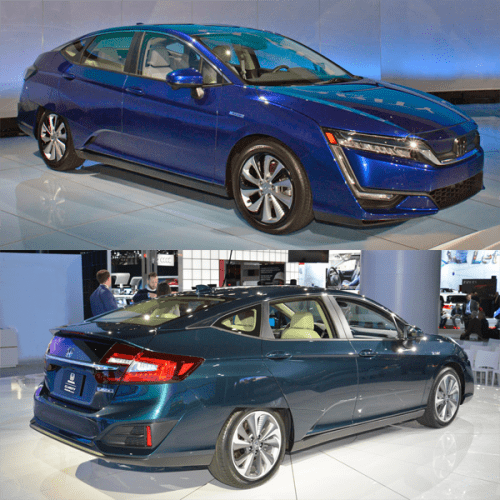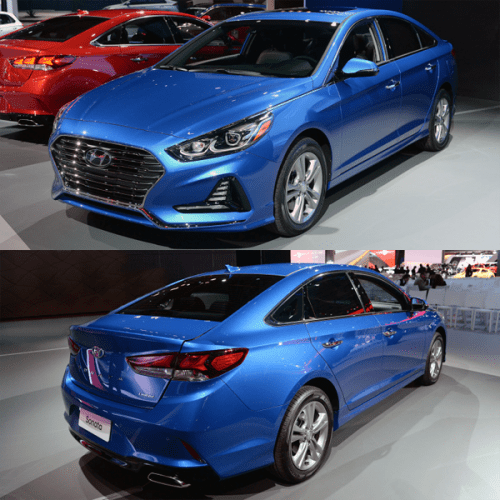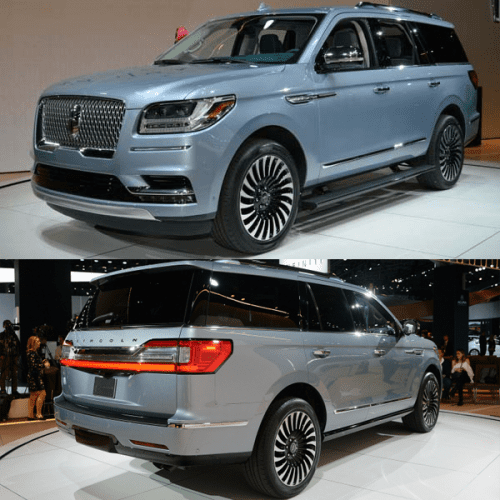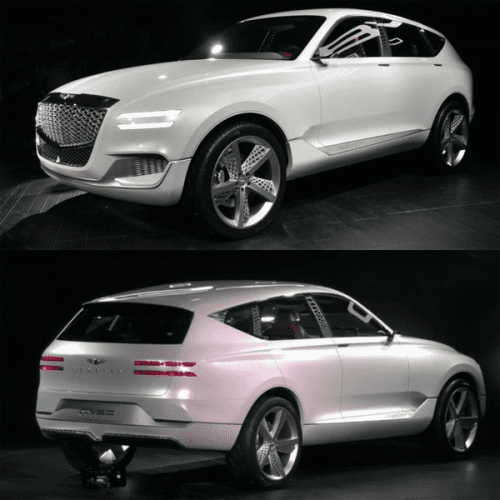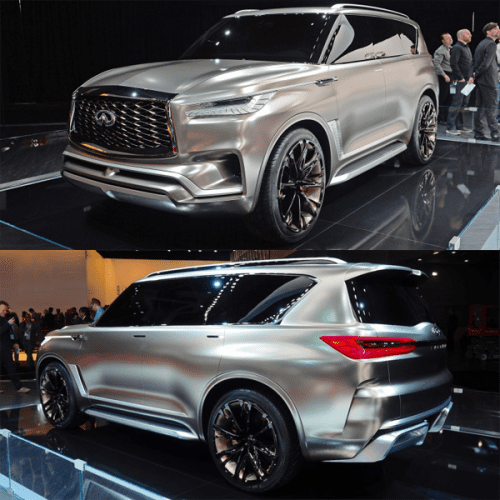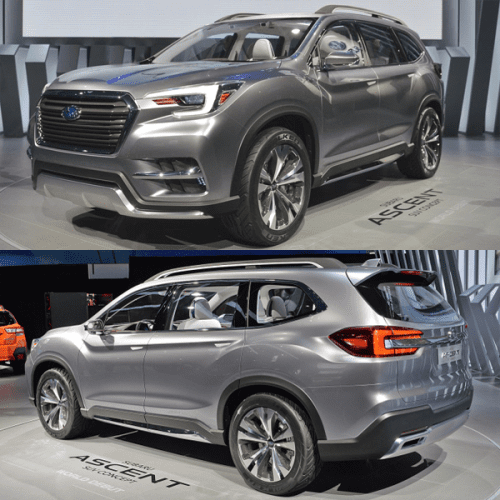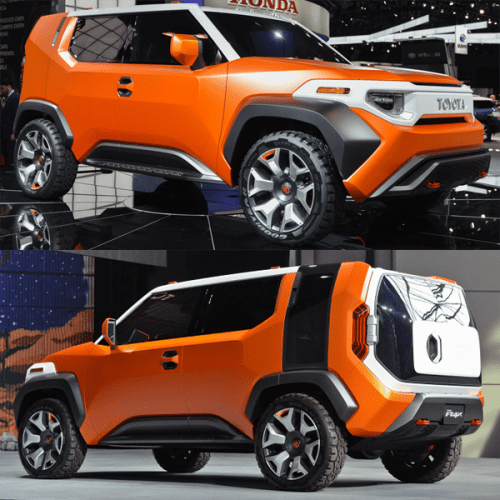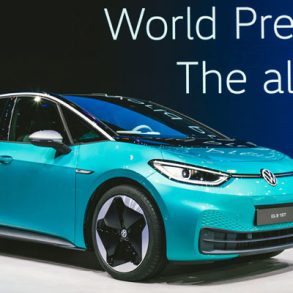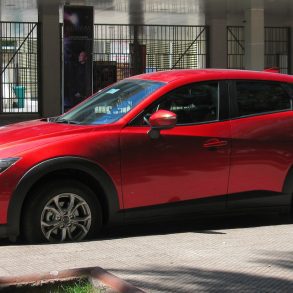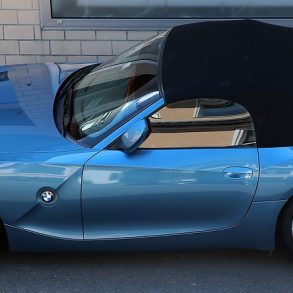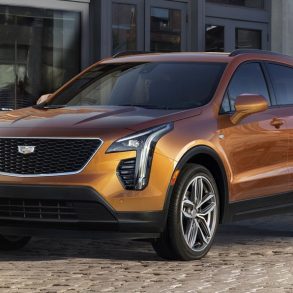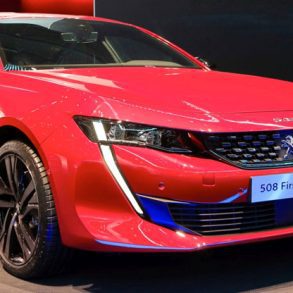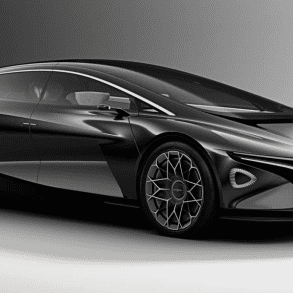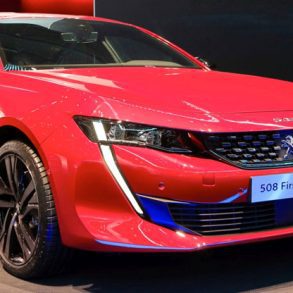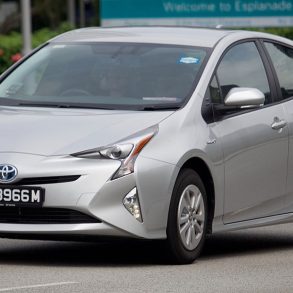The annual New York Auto Show is one of the most popular auto shows in the world, it’s traditionally held at the Javits Convention Center in Manhattan and this year it runs from Friday April 14 through Sunday April 23. That means it’s the last of the major auto shows in North America, after LA in November, Detroit in January and Chicago in February. As a result, the number of real new product launches and concept cars is relatively limited, especially compared to the most important of them all: Geneva. Still, we’ve had our pick of winners and losers of the show, and as usual we just can’t seem to agree on most of them. Let us know your view in the poll or in the comments below.
Production cars:
Acura TLX (facelift)
Kriss: Not
See the new TLX in isolation and you may think to yourself “wow, this is a pretty good-looking car”, but wish the grille wasn’t quite as big and brash as it is. Well, then, you’re in luck – there is a version of this car without this ugly new grille, and it’s called the pre-facelift TLX. Now, don’t get me wrong, the TLX is still pretty good looking, it’s just that with this facelift Acura managed to either botch the changes the TLX needed (the new grille is not an improvement, and does not go far enough to give this car “personality”) and not change things at all (the interior still looks no better than on the mass-market Accord). Acura is desperately looking for a car that will change the fortunes of its mainstream offerings, and this is not it, sadly.
Bart: Hot
What a difference a grille makes! Acura pulls trick from the Lexus playbook, using the motto: it doesn’t have to be stylish, as long as it’s brash. As opposed to Kriss, I think it’s an improvement compared to the pre-facelift version. The TLX goes from utter wallflower with its beak-nose to one of the most aggressive designs in the segment with its enormously wide grille. I don’t find it particularly sophisticated, or even attractive for that matter (I’d still prefer a C-Class, Q50 or even the aging 3-Series over it), but I just have to admire Acura for finally getting the point that just another vanilla sedan just isn’t going to cut it in this competitive segment anymore. Besides the sheer size of the grille, and the graphics inside it, there’s one more issue I have with the front end of the updated TLX: the lower part seems visually wider than the rest, which gives it a bit of a “heavy” presence, as if it has a double chin. The rear end has been cleaned up nicely, though.
Buick Enclave
The Enclave has been given the same weight-loss treatment as its sister models Chevrolet Traverse and GMC Acadia, shedding 400 pounds despite growing in size. This will have remarkable effects on fuel efficiency and handling and performance. What’s more, the Enclave will be the first Buick in the US that will get a range-topping Avenir version (there’s already a Buick GL8 Avenir luxury minivan in China since last November). Avenir is the sub-brand that should give Buick some luxury brand credibility. It gets distinctive exterior design features, use posher materials in the interior and offer fancier trim options, and I’m sure a nice percentage of Enclave buyers will be tempted to shell out a few extra thousands for a bit of premium experience and perceived exclusivity, bringing fatter profit margins for GM. Design-wise, the Enclave looks a bit less massive than the outgoing model, but the C-pillar looks a bit overdesigned in the same way former sister brand Opel has been doing in Europe lately, with the Astra station wagon and Crossland X. And on the other end of the scale: the way the grille connects to the headlights is not very original, as we’ve seen this at Audi, DS and a few more brands.
Kriss: Hot
I will admit upfront – I am a huge fan of the Enclave Mk I, and I believe the great-looking SUV single-handedly dragged Buick from the brink of irrelevance, and prevented GM from axing the brand. Well, maybe that and the Chinese market, but my first point is still valid. Which is why I was really worried for the new Enclave, as brands often find it hard to follow up breakthrough designs. Well, luckily, I needn’t have worried – the Enclave Mk II manages not only to look classier than the model it replaces through judicious use of chrome and neat detailing, but actually promises to be a better drive thanks to a big diet. Oh, and unlike Bart I think the “kink” in the between the c-pillar and the roof actually works in this instance, giving the rear of the car some dynamism, not unlike the “shark’s fin” b-pillar on the DS3.
Dodge Challenger Demon & Jeep Grand Cherokee Trackhawk
2.3 seconds to 60mph. That’s faster than the Bugatti Veyron, the top-end Tesla S – hell, it’s faster than any production car! (according to Dodge, at least). Oh, and 3.5 seconds for an SUV is also nothing to be sneered at. Car enthusiasts often talk nostalgically about America’s muscle cars from the 1960s, before noting that these days cars have become too safe, too predictable, too much like one another. Well, muscle cars don’t come any crazier or more muscular than this pair, and for that I got to love them!
Bart: Not
What do you do when your cars are aging quickly and you don’t have the cash to develop new versions, or even keep them up-to-date with the latest technology in fuel efficiency, electrification, autonomous driving etc.? You go for the quick-n-easy solution of slapping a bigger engine in them, come up with catching names like Hellcat, Demon and Trackhawk, use some clever marketing with smoking tires and roaring engines to build excitement around them, and there you go: you can charge a huge premium and make a boatload of cash on these otherwise obsolete models. It even works as a halo to promote the less powerful versions, so you need to give lower rebates on them. A win-win situation!
Of course I haven’t driven any of them yet, so I can’t judge on the handling, but I’m pretty sure they’re simply the most fun in a straight line, when drawing long black 11’s on the tarmac. I’d be bored with those shenanigans quickly and whan remains then? A load, uncomfortable gas guzzler that had a brief moment of glory when buyers were tripping over each other to get their hands on one, until they too got bored with them and there’s an oversupply in the second hand market when the wannahave feeling wears off. And expect to find quite a few at salvage yards too, as there’ll be plenty of drivers with more cash than skills and bigger balls than brains.
Honda Clarity PHEV and EV
So Honda wants to take a play from Hyundai’s playbook with the Ioniq and launch three different versions of electrified drivetrains in the same model. The Clarity FCV is already on sale, but an EV and PHEV will follow soon. I have a few issues with the Clarity, and one of them is the styling (obviously). Tesla has proven that green cars can be sexy too and their success has proven that buyers are willing to forego a little bit of efficiency for looking good, so why do Toyota and Honda keep bringing us these function-before-form, maximum-efficiency designs that may make the world a little cleaner, but at the same time make it uglier too? What’s up with those rear wheel arches? You’ve got to be kidding me, right? And Honda designers obviously didn’t get the memo that smaller rear lights are now the latest fashion.
But the biggest beef I have is with the technology: in a time when Chevrolet is already selling an EV with a 238-mile range and Tesla and Nissan are planning to launch EVs with similar figures later this year, Honda thinks 80 miles is enough for the Clarity EV. The brand states that it prioritized price and size over range but I guess they haven’t learned from the failure of the second generation Insight, when they said the same thing and then found out that buyers did prefer the better Prius technology over the lower price of the Insight. And come on, battery technology is developing at lightning pace and prices are dropping just as quickly, so every newly launched EV should have better figures than anything on the market at that moment, but Honda barely beats the figures of 7 years ago (in 2010 the Nissan Leaf already had an official range of 73 miles). Does the Clarity come with a cassette player and sealed-beam headlights as well?
Kriss: Not
I’m 100% with Bart on this – what is Honda thinking? First of all, I know these things are meant to be subjective, but c’mon – the Clarity is willfully ugly, as if it came from the Pontiac Aztec or SsangYong Rodius school of design. Second, the technology of the EV and PHEV models is not just not impressive – it’s humiliating how little EV range these models get. Maybe price will be the Clarity’s unique selling point, but has Honda really not learnt its lesson from the failure of the second-generation, built-down-to-cost Insight?
Hyundai Sonata (facelift)
The Sonata was in dire need of a facelift, and it got one quickly – mere three years after the model came to market. But while in some ways the new model is an improvement of what went before, it simply does not go far enough in my opinion to reclaim the lost consumer confidence. On the good side, the interior is now less of a mess, but still lacks any design panache, something the previous-generation model had in spaces. The same can be said of the exterior – the rear is now sportier-looking, if a bit too similar to its Kia Optima cousin, but the front tries too hard to be swoopy without having much of an identity of its own. For all the faults of the most recent Elantra, which I still view to be an inferior car to its predecessor, at least its front has a nice Jag XF-like aggression to it. The Sonata, not so much…
Bart: So-so
If there was ever one car that desperately needed a facelift, it was the 2015 Sonata. Sales have dwindled ever since its launch in 2014, in pale comparison to the previous generation which almost doubled its volume from 2008 (117,357) to the peak of 2012 (230,605). 2016 sales were down to below 200,000 units again for the first time since 2011. The Sonata was considered too bland and uninspiring at a time when even Toyota has realized that buyers want more style from the next generation Camry. So does the facelifted Sonata deliver the goods? Kind of. It looks better than the original, but still won’t win any design prizes. Then again, that’s not what people buy a Hyundai midsized sedan for, I guess. I’m sure it offers just as much interior space, fuel efficiency and standard equipment than the pre-facelift version, just now in a slightly less dull package.
Lincoln Navigator
This may be the moment where I admit I’ve always had a weak spot for these huge luxury SUVs with their enormous shiny grilles and king-of-the-road presence, even though I’ve felt thoroughly disappointed everytime I’ve actually driven one myself. The previous Navigator was impressive for maybe a year or two after its 2003 redesign, but its never been able to live up to its promise: it lacked style, it lacked swagger and it lacked sophistication. Now I don’t know about the latter part until I actually get to drive the new one, but for sure it has gained a lot of swagger. It’s big, it’s brash, it’s over the top. This is the car that Lincoln needed (no, deserved) to bring it back to being taken seriously as a luxury brand. In the US, at least. Just look at those turbine wheels, look at the square meter of chrome in the grille, with a logo the size of a shoe (and it lights up too! I know it’s tacky, but that’s what the buyers in this segment want, apparently…) If the Escalade is a brand of its own, that will never be renamed along Cadillac’s new naming scheme (XT10?), the Navigator now deserves the same.
Kriss: Not
The Navigator is a dinosaur that probably does not even deserve a new generation model by most objective measures. However, car-buying is often driven by subjective desire, and in this respect the Navigator caters pretty well to its target demographic – it has tons of chrome, it’s bigger than the average European house, and just begs to be put on 24″s with listerine-thin tires and be put in a rap video. That said, it’s not a complete failure to me for two reasons: first, the Range Rover-aping profile at least suggests the designers tried something, and second, the interior is actually quite nice to look at (though I have my doubts whether the quality of the plastics will be any better than in your average VW Golf). The Navigator will never seriously compete with top-end German, Japanese or Italian SUVs, but at least it no longer needs to be ashamed in front of the Escalade.
Concept cars:
Genesis GV80
When I saw the GV80 my first thought was “geez, what’s up with that grille?”. But look past that particular aspect of this car and the rest looks really rather good – from the dynamic cab-backward proportions, through the swoopy character line on the side, to the cool details like the thin lights and air extractors behind the front wheels. In fact, I feel like this is one of those designs that will looks better once its toned down for production. But the most important thing about this car is that it will compete in the crossover/SUV segment, where consumers are less snobby than in the Large and Limousine segments, allowing the brand to quickly gain a foothold. For evidence how this can work look no further than at the success of the Jaguar F-Pace and Maserati Levante in the US.
Bart: Not
Oh, this is exactly the car Genesis needs, so far I agree with Kriss. Right now the brand only sells two sedans, and luxury sedans are not in very high demand at this moment: the Cadillac XT5 outsold all of the brands’s sedans combined in March, and all of Lexus’ sedans lost volume in 2016 while all but one of its SUVs gained volume. So if Genesis wants to get the volume it needs to be considered on buyers’ shopping lists, it needs an SUV more than anything. But if this is the right execution? Not so sure. Last year’s Genesis New York concept of a sports sedan looked promising and was one of the stars of the show among our readers too, but the GV80 is a bit too awkward and out of proportion for my liking. The shape and positioning of the grille and the double-stripe headlights and taillights are just not my cup of tea. And while bizarre shapes and outsized wheels are nothing to be surprised about in concept cars, the shape of the grille and lights are usually seen as harbingers of what the production model will look like. I hope the designers take another look at the New York Concept…
Infiniti QX80 Monograph
Did I just mention I have a weak spot for huge luxury SUVs? The current QX80 is my favorite of the pack, just because of its impressive grille, its intimidating presence and its rounded-off design, because I’m sure the rest of its “qualities” are just as under par as those of its rivals Escalade, Navigator and LX. This concept car anticipates the next generation QX80 and I love what I see here. More rounded corners, a more intimidating fascia and more chrome. I also love the bulging wheel arches. Bring it on, Infiniti!
Kriss: So-so
I have had some to say that, while I don’t share Bart’s love for large SUVs in the slightest, the QX80 concept is not half-bad. Sure, it’s way over-designed in places, and suffers from a few too many concept-car irrelevancies (the rear “diffuser” is a bad joke, especially as it’s finished in satin), but the overall shape feels right, and the hidden A-pillar looks pretty neat. I just wish that Infiniti put some impressive technology into the QX80 as well, rather than barely matching its US competition.
Subaru Ascent
This looks like the making of a much more serious attack on the seven-seat SUV segment than Subaru’s previous effort, the Tribeca. But while that car was a failure, to me it was a glorious failure, in that it tried (and failed) to bring some much-needed dynamism and design panache to the segment. The Ascent may be a stylish concept, but Subaru more than any other carmaker has form in turning great-looking concepts into boring-as-hell production cars, which leaves me worried for the finished product. What I would be excited for is if Subaru positioned the production Ascent at the smaller end of the three-row SUV segment, providing decent seven-seat capabilities without the usual 5m-plus length that most cars in this segment go for, except for the under-appreciated Kia Sorento.
Bart: so-so
Subaru wants a second attempt at a three-row crossover after the hideous Tribeca miserably but understandably failed. The market is ready for it, and so is the brand this time. This is the car that will give the Volkswagen Atlas a run for its money. I like the design a lot, the Subaru corporate grille has turned out nicely in its extended form for the higher vehicle, and the pronounced wheel arches and side cladding are just shy of being too much, although I understand if some may find it’s already crossed that line. The front 3/4 looks like a Forester with the hood moved upwards a bit while the rear 3/4 shows some resemblance to the Kia Sorento. Overall the design isn’t groundbreaking or exciting, but better than what Subaru has shown lately. Let’s just hope this design doesn’t get watered down even further in production trim, as the brand has become known for, because then it will become too bland. I can’t see how this is not going to be another hit for Subaru.
Toyota FT-4X
Toyota is not prepared to keep the Jeep Wrangler and upcoming Ford Bronco uncontested and shows that it’s contemplating a successor to the FJ Cruiser with this Future Toyota-Four-wheel-drive Crossover. It’s not just funky to look at either, as it has a number of practical features that owners would love: the rear hatch gives the choice of opening it upward or sideways, the base of the roofrack has power supplies for rooflights or camping equipment, it has a smartphone mount on top of the center console instead of a navigation system that’s too complicated and already outdated upon launch and the interior lights can be removed to be used as flashlights. All very interesting, too bad many of these features won’t make it into production, if the car ever makes it that far at all. Still, I like the boxy and chunky design, the bright orange color and the bold TOYOTA letters instead of using the logo.
Kriss: Hot
I agree with Bart that the boldly-designed FT-4X looks like a very promising prospect. Aside from the styling, though, I also like the fact that the FT-4X is a much smaller and more modern car than the design would suggest – it sits on the same new modular TNGA architecture that underpins the Prius Liftback and C-HR models. With the trend towards faux-roaders giving carmakers more space to explore new niches, I hope this model makes it into production and shakes the market up a bit.

